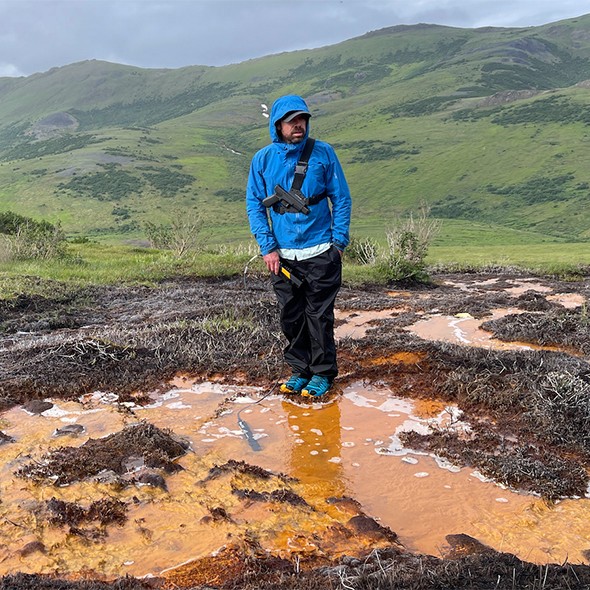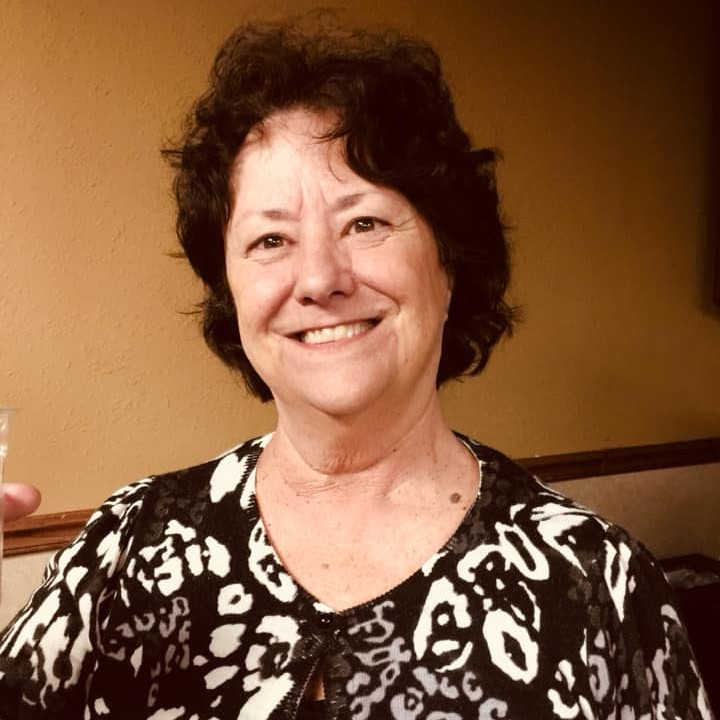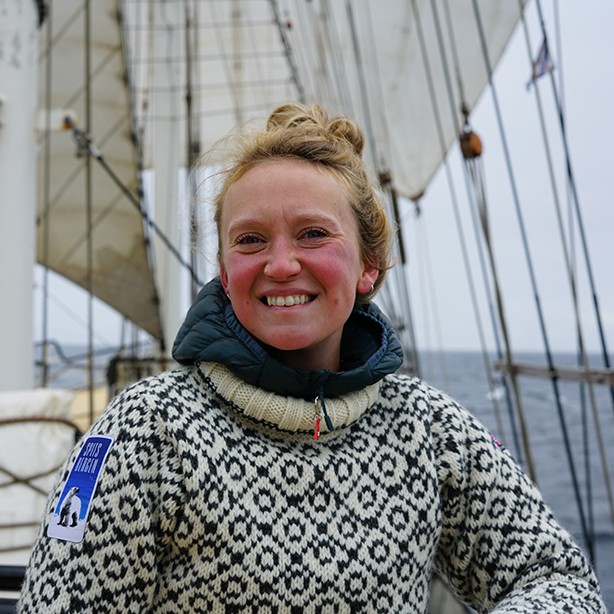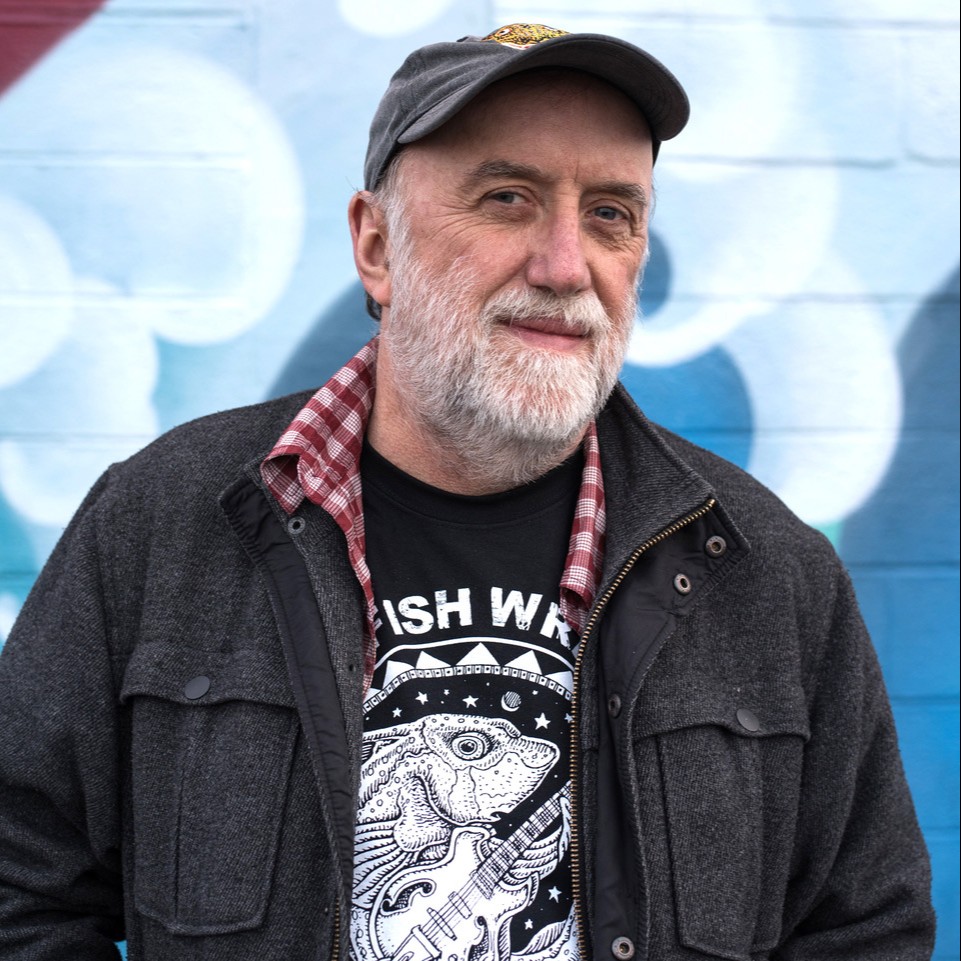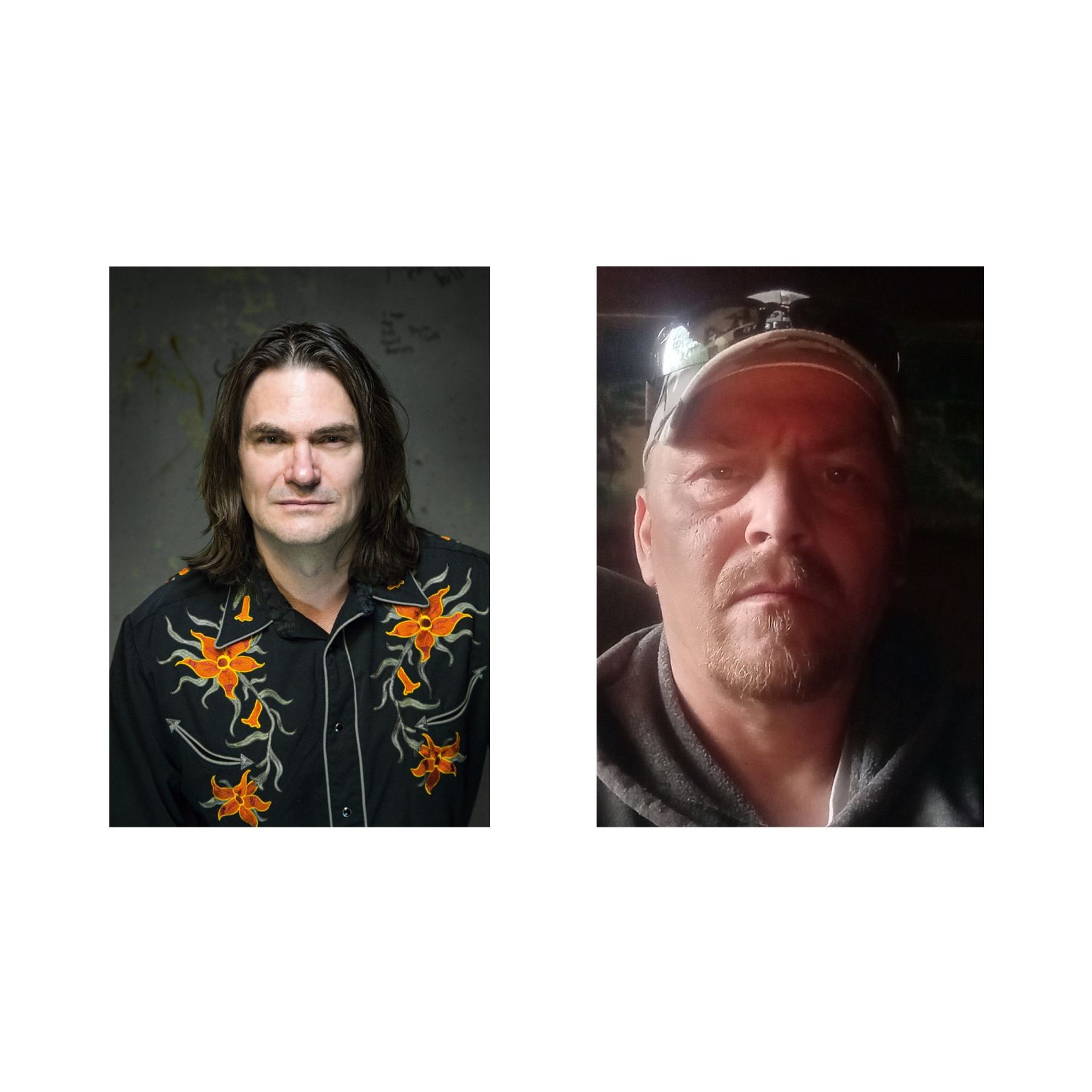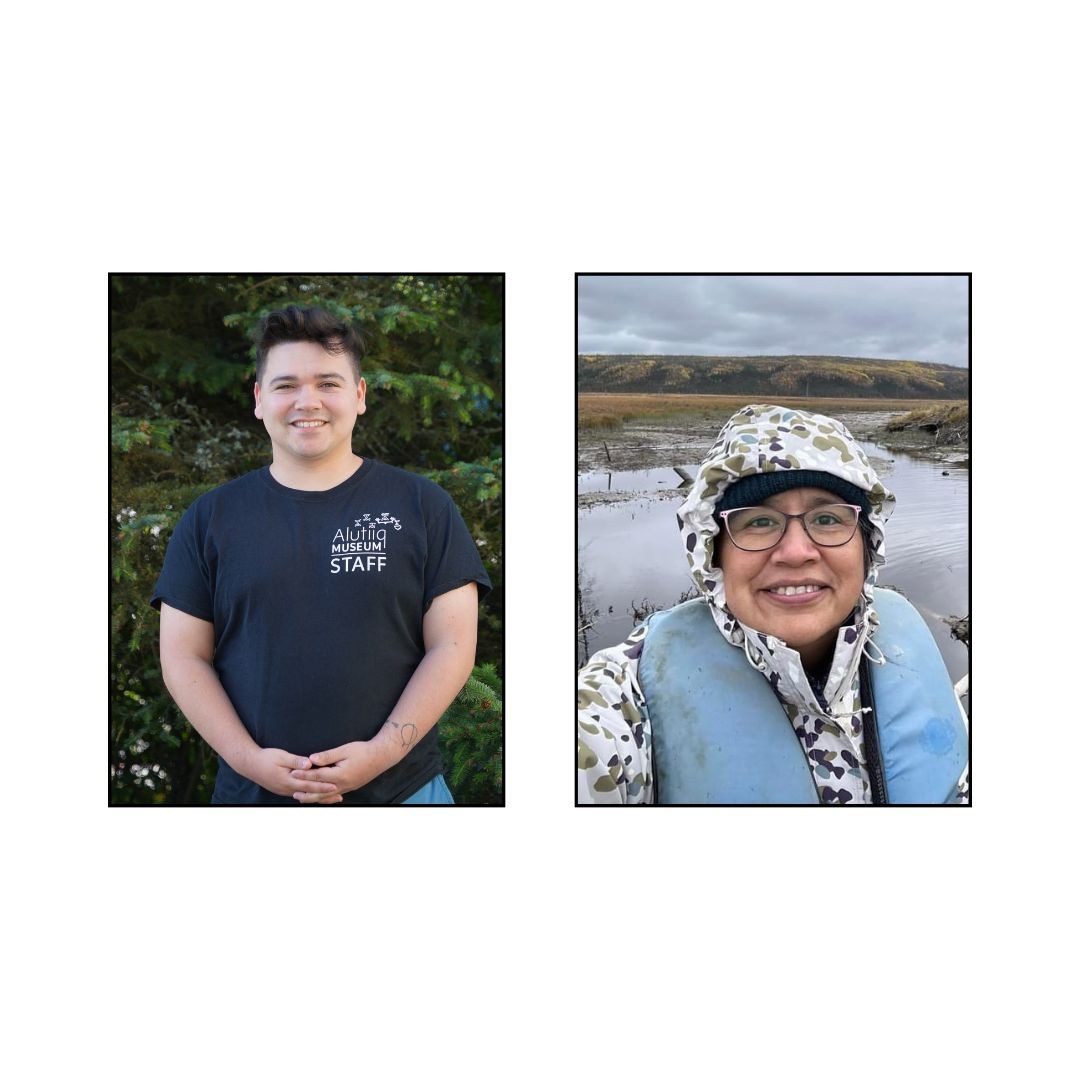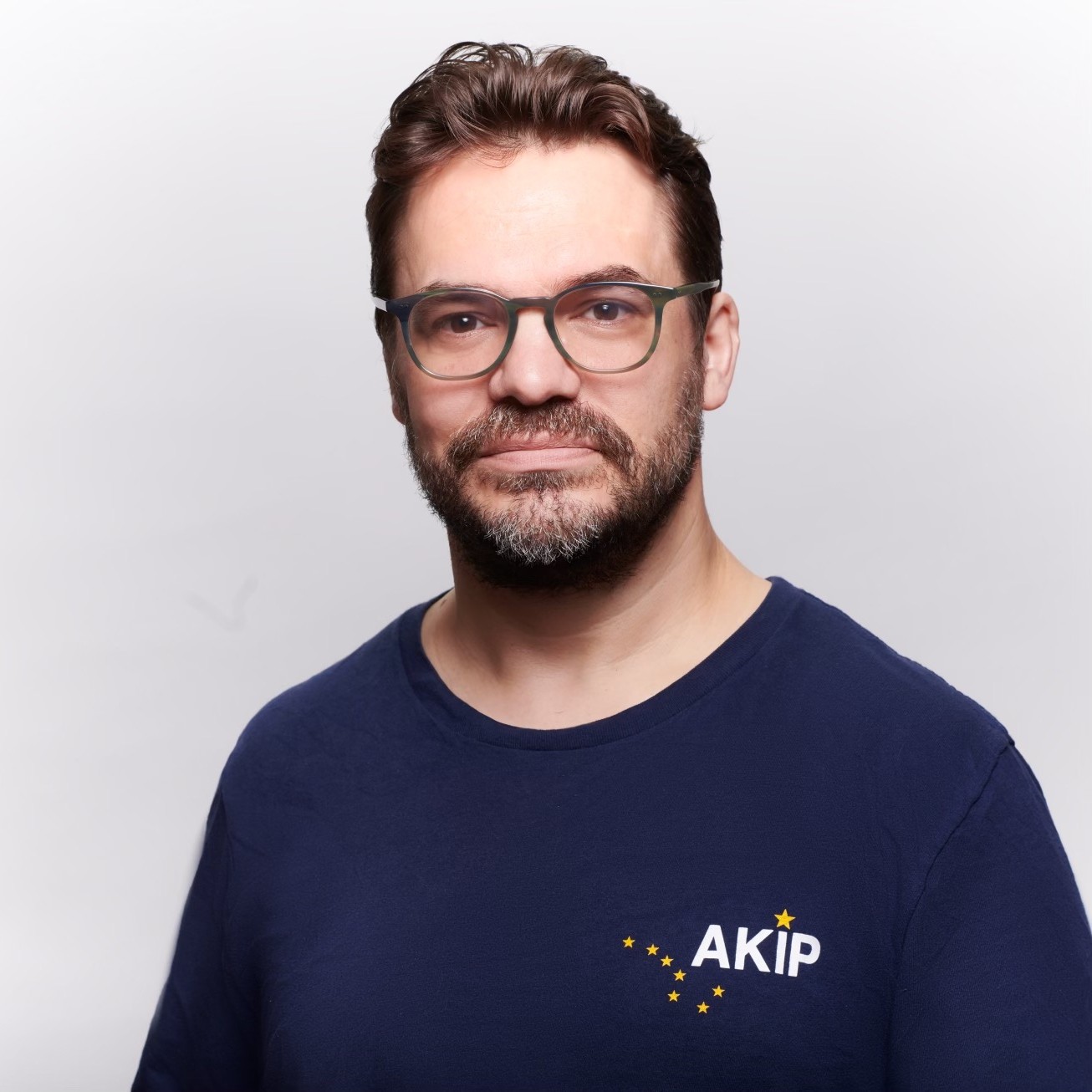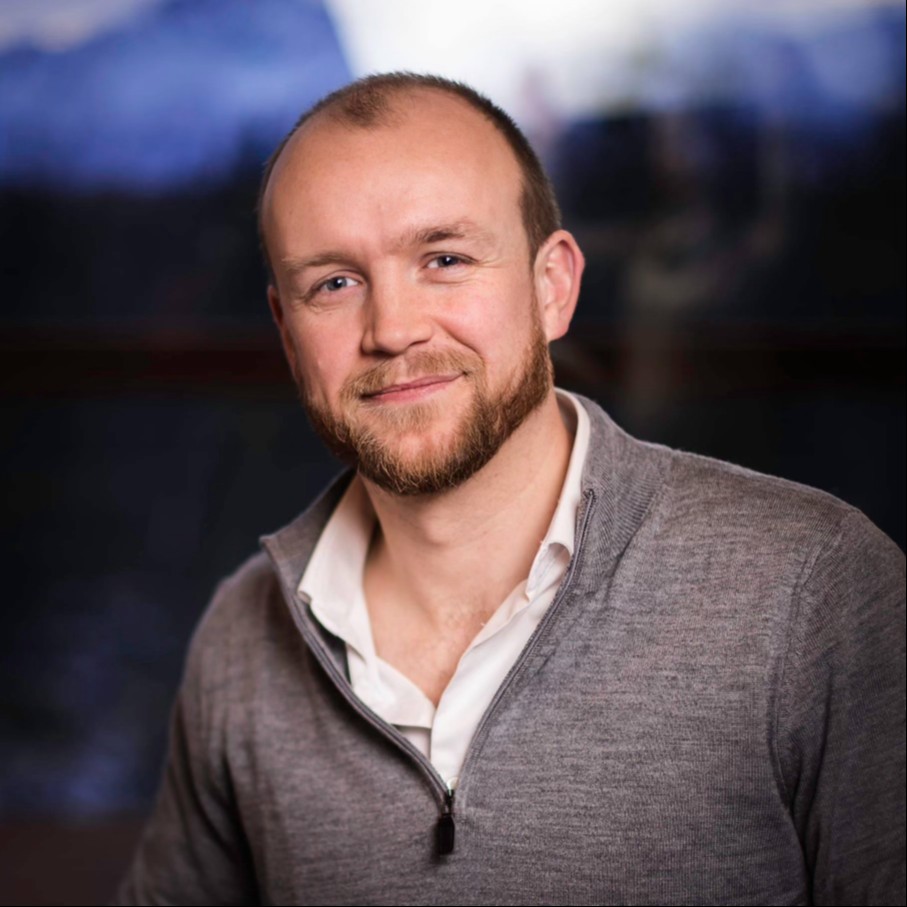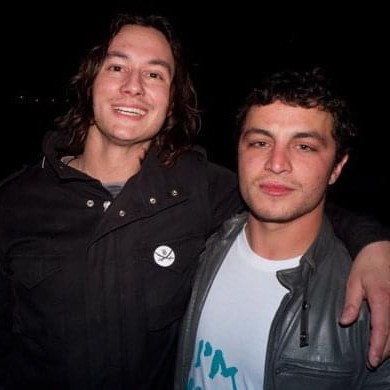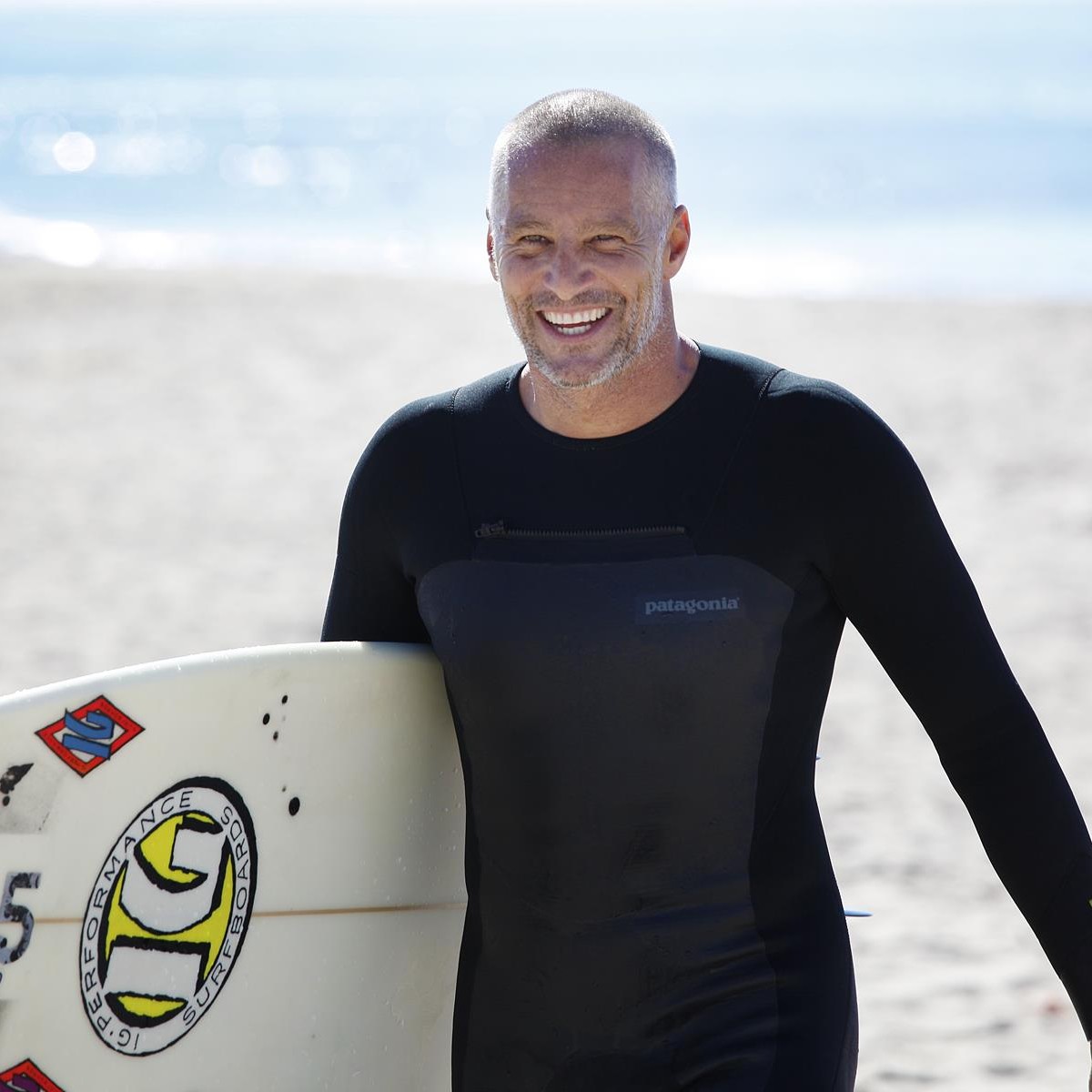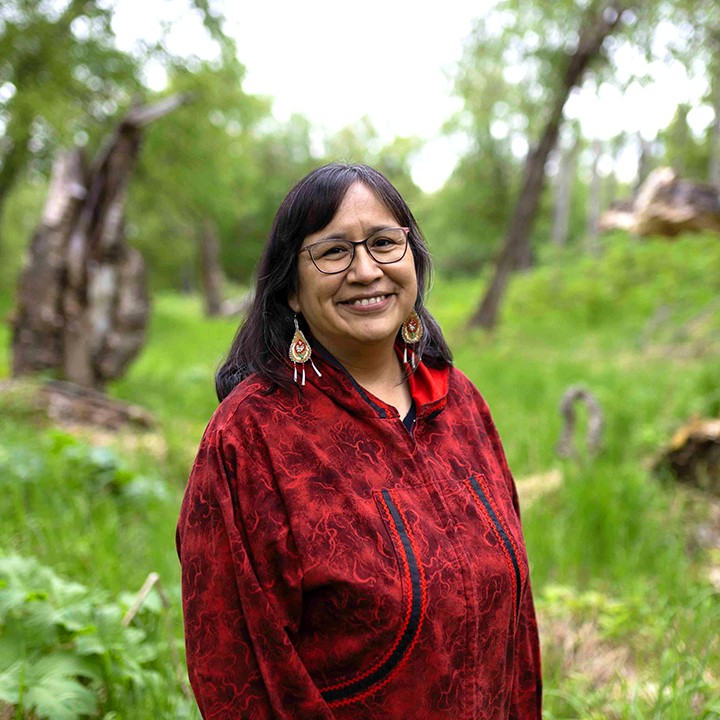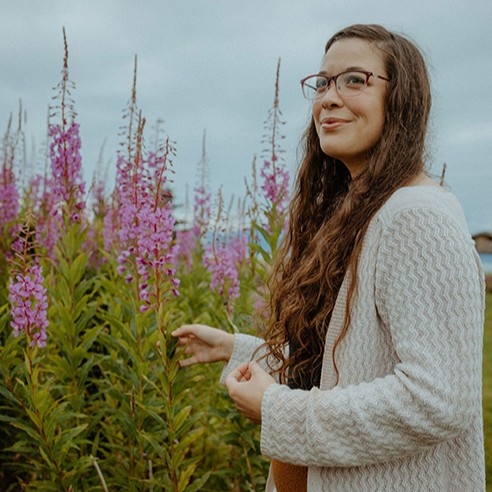Discover Crude Conversations
Crude Conversations

Crude Conversations
Author: crudemag
Subscribed: 20Played: 569Subscribe
Share
© Copyright 2018 All rights reserved.
Description
Each week ”Crude Conversations” features a guest who represents a different aspect of Alaska. Follow along as host Cody Liska takes a contemporary look at what it means to be an Alaskan.
Support and subscribe at www.patreon.com/crudemagazine and www.buymeacoffee.com/crudemagazine
Support and subscribe at www.patreon.com/crudemagazine and www.buymeacoffee.com/crudemagazine
258 Episodes
Reverse
Kristen Faulkner is a professional cyclist and she recently won gold in two events at the 2024 Paris Olympics, women's individual road race and women's track cycling team pursuit. It was a dream come true. Ever since she was a kid — growing up in Homer, Alaska — she wanted to compete in the Olympics. As a young girl, she’d watch it on TV and it was the only time she saw women competing in professional sports. But it takes more than just a dream and a positive attitude to make it to the level that Kristen’s at now. She says there’s a process: You have to be humble and analytical and constantly learning. You also have to be willing to take risks.
In 2016, Kristen graduated from Harvard and then took a job in New York and then in San Francisco as an investment associate. She was in her mid-twenties when she quit that job and started pursuing a career in cycling. It was a decision that she agonized over — to leave a lucrative job for an uncertain one. But she eventually determined that the pros outweigh the cons, that she would rather live with no regrets.
Her approach to cycling, like everything in her life, is about assessing what you’re good at and what you’re bad at. And then when you’ve identified what you’re bad at, you focus on it until it’s a strength. This is one of the reasons she excelled in cycling so quickly: She made her weaknesses her strengths. She approached it with the mentality of, “It’s not that I’m bad at it, it’s that I’m just not good at it yet.”
Photo by Anouk Flesch
Paddy Sullivan is an ecologist, and every year he travels to the Brooks Range in northern Alaska to collect snowpack samples. The area he visits is remote and often inaccessible. The Salmon River, for example, is a place where bush planes rarely land. They’ll land outside of the watershed and then people walk in. Paddy’s been going here for 20 years now, and in that time he and Roman Dial — an adventurer and fellow scientist — have formed a hypothesis about why the area is changing so much: The retreat of sea ice fuels increasing snowfall and nearby landmasses, protects seedlings and improves soil nutrient availability. And all of this allows for shrubs to proliferate and trees to advance into the tundra. It’s called the Greening of the Arctic and it’s changing the land; It’s also changing how people and wildlife use the land.
In 2019, while Paddy and Roman were collecting their datasets they stumbled upon something concerning and out of place: The once gin-clear Salmon River had turned orange. They noticed other rivers and streams had turned orange as well. In all the years they’d been coming to the Brooks Range, they’d never seen anything like it. So, they decided that they needed to sound the alarm, to let other scientists know what was going on up there. And hopefully, with their help, they could figure out what the implications were for humans and the surrounding ecosystems. Because something like this — an occurrence that trickles down into other ecosystems — has the potential to trigger ecosystem collapse. This happens when the rules of an environment are altered in a way that forces wildlife and vegetation to change how they interact with their environment.
In this one, Cody talks to Laine Welch. She’s been reporting on the Alaska fishing industry for 36 years, and during those years her goal was always to show where Alaska fits into the global commodities market because seafood is one of the largest commodity items sold throughout the world. Given Alaska’s commercial fishing market, there’s always been a real opportunity to be a major player in the global seafood market. But Laine says we tend to squander our potential profits. For example, there are plenty of revenue streams that could be taken advantage of in areas like cosmetics and pharmaceuticals. Or how almost 75 percent of all of the value from groundfish — Alaska’s number one species in terms of volume — goes out of state. Primarily to Seattle.
Laine says that when she first started reporting on the Alaska fishing industry she tamped down her criticism of it, and instead chose to be its cheerleader. But when she retired two years ago, she felt a new sense of responsibility and freedom to point out areas of the industry that could use improvement. She was no longer beholden to only reporting on the good or acceptable news. So, in retirement, she’s been focusing on issues like the lawful waste of seafood caused by bycatch — the catching and discarding of unwanted sealife. She says that every other protein industry has a philosophy of using the whole animal, what they call ‘from the rooter to the tooter.’ But in Alaska, they take the filet and the rest goes. This has always been important — avoiding waste and maximizing profit — but it’s especially important now, when the economy of Alaska needs new revenue streams.
In this episode, Cody talks to Rose McAdoo. She’s a pastry chef and an artist. But it wasn’t until recently that she started embracing the title of artist because she had identified so strongly with being a pastry chef.
She’s been working in kitchens since she was 14, and then when she became a chef she decorated wedding cakes in New York. It was a dream job, until it wasn’t. She realized that she wanted more out of her work, an opportunity to make a difference. So six years ago she took a job in Antarctica as a sous chef — today she splits her time between there and Alaska. Her surroundings and the scientists she worked around in Antarctica eventually inspired her to create something that could help share their science. That’s when she began creating cakes that convey scientific ideas.
Rose has traveled to and worked in some of the most extreme and remote environments in the world — Antarctica, a volcano summit in Kenya, underground in the Australian Outback, on a ship in Svalbard. She says that nothing is controllable in these places, and that the control lies in the planning she does before she goes into a given environment. She has to be flexible and able to pivot because the weather and the conditions could change at any minute.
Given the seriousness of the environments she works in, she appreciates the levity of cake. How it allows people to let their guard down and be receptive to scientific ideas about issues like climate change. However, she does struggle with the potential impact of what she’s doing — she says she doesn’t want to be seen as a “little cake maker just posting on Instagram.” She wants her work to carry meaning and to create larger conversations.
In this one, Cody talks to Ray Troll. He’s an artist and he describes himself as a paleo-nerd. Ever since he was a kid, he’s been obsessed with dinosaurs. In fact, before he even learned how to spell his own name, he learned how to spell “dinosaur.” They were also the first things he remembers drawing. He says that as a child drawing was his superpower — it endeared him to his teachers and classmates. Then, around 5th grade, he got a hold of issues of Mad Magazine and Cracked Magazine. He was immediately drawn to the offbeat, dark humor. So much so that it was forever infused into his artistic style and sensibilities. It’s evident in one-liners like “Spawn Till You Die,” “Return of the Sockeye,” and “Baitful Dead” that accompany illustrations of humans and sea life.
He says he loves surrealism because it’s something you can’t really explain rationally. It’s bizarre, almost dreamlike, and it speaks to you on a gut-level. It might be visually appealing, it might convey a message or it might be a joke. Much of Ray’s art comes from a place of humor, but a lot of truth can be said in jest. Musings on deep-time and nature and culture all wrapped up in a dad joke. For him, art is about learning and cataloging — with planes when he was a kid and later with fish after he moved to Alaska in 1983. He says that drawing is about learning to see. It’s about the accumulation of knowledge and wisdom that you gain throughout your lifetime.
In this episode, Cody talk to Fred Roehl and David Holthouse about Sasquatch encounters. Fred is a YouTuber and a Sasquatch, or Hairy Man, oral historian. His channel is called “The Subarctic Alaska Sasquatch and Alaska’s Little People” and in it he narrates Sasquatch encounters and also interviews people who tell their Sasquatch stories. At this point, he’s collected over 200 of them, and he says that there are a couple common themes throughout: Sasquatch is either pushing humans out of a territory or they’re watching them. To Fred, Sasquatch is an adversarial predator. So, sharing these stories is a form of public safety — similar to being bear aware. It’s a perspective and a healthy fear that he grew up around in Bristol Bay.
David Holthouse is an investigative journalist, and his perspective comes from the intersection of belief and propaganda. How the idea of Sasquatch can be used to enforce territorial claims, or as a warning to keep people in-line, as was the case with his 2021 docu-series, “Sasquatch.” The concept of the show is based on a story he heard in 1993, about a Sasquatch killing three people on a weed farm in Northern California — an area that David says reminds him of Alaska. The story goes beyond Sasquatch, though. At its core it’s about long-standing social issues like racism, the war on drugs, gangs and violence.
In this Chatter Marks series, Cody talks to storytellers and knowledge holders about Sasquatch, in its many variations, and its personal and cultural importance to the people of Alaska.
In this episode of Chatter Marks, Cody talks to Dehrich Chya and Angela Gonzalez about the cultural importance of Sasquatch. Dehrich works at the Alutiiq Museum in Kodiak and Angela is an Athabascan artist and writer. Dehrich’s perspective is of coastal Alaska. He says that the Alutiiq people call Sasquatch or Bigfoot creatures Aula’aq, and its temperament ranges from being a threat to being a menace to being used as a cautionary tale. For example, parents might use stories of Aula’aq to warn their children away from dangerous areas. And stories of its appearance vary. Some describe it as tall, while others describe it as short, but it’s always hairy and many believe it to be a shapeshifter.
Angela’s perspective is of interior Alaska. Growing up, she says that talking about Bigfoot was taboo, but that there are certain times of the year — mainly winter — when it’s appropriate to talk about it. Bigfoot is a powerful being, so it’s important to give it a lot of respect. While the curious might seek out stories of Bigfoot, others will avoid them out of fear of inviting that presence into their life. Angela says that it comes down to respecting the land, the animals and the water. Because in order to survive, we must live in harmony with our surroundings; we have to respect the symbiosis that exists between humans and nature.
In this Chatter Marks series, Cody talks to storytellers and knowledge holders about Sasquatch, in its many variations, and its personal and cultural importance to the people of Alaska.
In this one, Cody talks to Jory Knott. He’s the Executive Director of the Alaska Innocence Project. The Alaska Innocence Project started in 2008 under the direction of Bill Oberly, and it took seven years for them to get their first exoneration — it was the Fairbanks Four case, in which four Alaska Native men were wrongly convicted of murder and subsequently spent 18 years in prison. Jory says that case involved a number of factors that led to a wrongful conviction, including eyewitness misidentification, incentivized witnesses, confirmation bias, racial animus, misconduct, and bad science. This was the case that got Jory interested in working with the Innocence Project — he was an intern then, but made the decision to go to law school so that he could work there full-time.
Studies that consider the number of people who have been wrongfully convicted in the U.S. since the late-1980s estimate that up to 5 percent of the prison population is wrongfully convicted. In Alaska, that would mean about 150 innocent people are in prison. Nationally, the average person who is wrongfully convicted spends 12 years in prison before they’re exonerated. And Alaska is among about a dozen other states that do not have a wrongful conviction compensation statute, so exonerees don’t get any money following their release. Even convicted felons receive things like re-entry services, recidivism prevention, education, job services and drug counseling. But Jory says that, despite all of this, he still has faith in the criminal justice system because, for the most part, it gets it right and wrongful convictions are rare.
In this one, Cody and co-host Aurora Ford talk to Heidi Huppert. Aurora is a former journalist and currently works at Covenant House Alaska; Heidi is the Chief Program Officer at Covenant House. Heidi’s perspective on homelessness in Alaska is unique because, in her younger years, she spent time on the streets of Anchorage. Her mom had a violent and abusive boyfriend and Heidi didn’t feel safe at home. So, one night after an especially brutal domestic situation, she found herself wandering around Spenard, trying to figure out what she was gonna do. She was about 12 years old and she had school in the morning. Because it was open and because it was familiar, she ended up just hanging out at McDonald’s.
She says that, for a long time, she didn’t tell her story. It was just too hard to relive those memories, and the violence and the pain that came with them. But right now, she’s at a point in her life where she sees how much power and strength there is in telling her story. How it can potentially help a young person understand that they might be in the middle of the worst moment or moments of their life, but it won’t last forever. Things can get better.
Heidi says that the issues of homelessness and human trafficking — another issue that she deals with a lot at work — are ones that we have to care about because they involve young people and they are the future of Alaska. They will one day hold the political, economic and social power. So, if we want our state to be healthy, we have to care about what is happening to our young people.
In this one, Cody talks to Buddy Bailey. In the late 1990s, Buddy became the face of his dad’s furniture business, Bailey’s Furniture. He was 7 years old when he appeared in his first commercial — the crew filming it realized that the furniture itself didn’t have much character, so they suggested that Buddy get in front of the camera. He was a natural — his charisma and affability came easy. He’d chat about furniture and deals, and he’d even spin a basketball on his finger while he did it.
As the years went on, he became a local child celebrity. He continued being in Bailey’s Furniture commercials, and he was becoming a rising basketball star. When he was 15 or 16 years old, he remembers the Anchorage Daily News came out with a list of the most recognizable faces in Alaska and Buddy was number two, right behind U.S. Senator Ted Stevens.
He says the lessons he learned from working at Bailey’s Furniture helped him on the basketball court. In basketball, like in retail, you’re dealing with personalities and egos, but you’re not always worried about money. So, basketball was easy. All he had to do was focus on scoring points and winning. This mentality, as well as his skill on the court, brought him all the way to playing college ball.
Today, he no longer works at Bailey’s Furniture, he quit in 2013 to pursue a career in finance and then in 2020 he founded a virtual lease-to-own business. He no longer plays ball semi-professionally either, but he does play recreationally. He says he’s probably a better shooter than he ever was and a better overall basketball player. He plays one-on-one almost every day at his local gym. He also coaches both of his kids’ basketball teams, teaching them that it’s not always about winning, it’s about learning life lessons and values — accountability, work ethic, the ability to fight for what you believe in, and how all of that will eventually filter over to your family.
In this one, Cody and co-host Aurora Ford talk to Josie Hayano. Aurora is a former journalist and works at Covenant House Alaska; Josie is a member of the United States Advisory Council on Human Trafficking, a presidentially appointed position. She was the first Alaska Native person to be on the board. Every member of the board is a human trafficking survivor and advises and makes recommendations on federal anti-trafficking policies. Josie’s perspective and contribution to that conversation is Alaskan. She’s often thinking about rural communities and the human trafficking issues they face — she says that most of the trafficking she’s seen there has an element of substance use coercion, mental health coercion and/or forced drug trafficking. And because of the remoteness of these communities, it could take three days and a float plane and a boat ride to respond to a crime.
In 2022, Josie, Charlene Apok of Data for Indigenous Justice, Prevention Now and Ride My Road started a yearly gathering called “The Alaska Data Summit: Translating Data into Action Against Trafficking Exploitation and Missing and Murdered Indigenous Relatives.” One of the missions of the summit is to decolonize data so that, in the future, Native communities can reclaim and own their own data. It’s about taking back information so that it can be used for healing. Josie says that it’s about “making the data tell our stories” and “making it be representative of who we are.” Because data is a universal language, it doesn’t matter what field you work in, we all can understand numbers and their prevalence. So, by creating a universal data system throughout Alaska, information can be shared within the community, paving a path for a deeper understanding and better solutions to human trafficking.
For years, Shyanne Beatty has wanted to move back home to Eagle, Alaska. It’s where everything started for her — her love for culture, language, art and music. Today, she sits on her property in Eagle, along the Yukon River, and she imagines herself as a young girl, running down the river banks with about 20 sled dogs or trapping marten out at 40 Mile or walking to school, singing to herself to ward off any curious wildlife. Reflecting on this, she realized that music has been foundational for so much in her life, it’s carried her and it’s protected her. Radio too. She remembers one Thanksgiving out at 40 Mile, she and her dad were listening to “Trapline Chatter” and they heard her grandparents wishing them a Happy Thanksgiving. The reach of radio had made its impression on her. So, when she left Eagle, that passion for radio and love for culture, language, art and music manifested itself in “Earthsongs,” the radio show she hosted on KNBA in Anchorage. It highlighted indigenous artists, musicians, and it was the first nationally-syndicated show out of the state of Alaska.
Shyanne is in the process of revitalizing her Native language, Han Hwechin Athabascan. There are only four people left who can speak the language, and she says the process of learning it has been difficult because people have been resistant to teaching her. This is because land, subsistence rights, language, culture and even children were taken away from her people. So, the insistence on guarding these things is understandable. To learn the language, Shyanne resorted to a more academic setting, mainly through classes.
Lately, for about six hours a week, she’s been working with her aunt to continue learning and documenting the language. Usually they get together and cook, chatting with each other in Han Hwechin the whole time. And for all this, she wanted to be back in Eagle, on her traditional lands; to have that sense of place and belonging. Because learning and documenting her culture and lifeways is one thing, but it’s also about creating a reservoir of culture that future generations can learn from.
Mario Chalmers is part of a small group of Alaskans to be drafted to the NBA, including guys like Carlos Boozer and Trajan Langdon. He’s won championships at every level: Two high school championships, one NCAA championship — the one where his 3-pointer put the game into overtime, with his team taking the win — and two NBA championships. He was in the NBA for nine seasons — seven years for the Miami Heat, one for the Memphis Grizzlies and one waived because of an injury. In those nine years, he was part of 99 playoff games. He played alongside guys like LeBron James and Dwyane Wade. He was the starting point guard for the Miami Heat when they won two championships in 2012 and 2013. He says that the only thing he has left to win is an Olympic gold medal.
In 2016, Mario tore his achilles tendon. It was a pivotal moment in his career, one that eventually led to him retiring from the NBA. But before he was comfortable with retiring, he tried making his way back by way of playing in G-League and overseas. Overall, he enjoyed his time playing outside the NBA, but he found himself reflecting on his career more than he was trying to regain it; he found himself being proud of his accomplishments and accepting this new chapter of his life, where he’s a full-time dad. He says it really dawned on him in 2021 when the Miami Heat signed him to a 10-day contract. He says that even though he didn’t get to play, it gave him the closure he was seeking — being able to walk off the court, healthy and on his own terms.
In this one, Cody talks to Anthony Black and Jerry Smyth. They both grew up skateboarding in Anchorage in the ‘90s, before there were really any designated areas for skaters. Besides summer skateparks like the one in the outside Ben Boeke ice rink and the Girdwood skatepark, 40 miles outside of Anchorage, spots were few. So, in the summer they skated places like Abbott Loop Elementary, Hanshew Middle School and the flatbank and box set-up at their buddy Micah Hollinger’s house. In the winter, it was indoor garages, and before 9/11 Elmendorf Air Force Base had an indoor skatepark that was open to the public. And when they were feeling ambitious, they drove to Nikiski, 170 miles outside of Anchorage, to skate a couple ramps and flat-bars at Brandon Chenault’s warehouse. Jerry says it was brutal. He remembers people getting so desperate that they’d break into the University of Alaska Anchorage to skate in the winter months. It was a struggle to be a skater back then because you had to really want it.
Skating was an integral part of Anthony and Jerry's lives. It’s what they spent most of their adolescent and teenage years doing and it’s where they met most of their friends — many of them they’re still friends with to this day. And to be part of that crew, you had to have thick skin — they were hard on each other, but underneath all the ruthless jokes, there was always love. If you got a nickname, however cruel, you were usually in; if you got made fun of and you could handle it, you were in. And in the middle of all this — the skating and the hating — they were getting shots for the Boarderline snow and skate videos. It was a ritual that, in the best of cases, ended with a full video part that premiered at places like the Fourth Avenue Theatre. Looking back on those videos now, Anthony says his favorite clip is probably his switch heelflip down the 10-stair at East High School and Jerry says it was the crooked grind he did down the handrail at O’Malley Elementary.
In this one, Cody talks to Dan Egan, better known as IG. In 1986, he started IG Boarding Shop. At the time, he was competing in big wave surfing, but there really wasn’t much money to be made in it. So, he thought, instead of trying to be in the contests and scraping by, maybe he’ll just make surfboards for all surfers he knows. His surf shop soon blossomed into a full retail store and for 25 years IG made and sold his own surfboards, skateboards and snowboards. In total, he hand-shaped about 4,500 surfboards, thousands of skateboards and about 1,500 snowboards.
But what he really wanted was to make enough money so that he could go surfing and snowboarding. So, every year he would take weeks and months off work to ride. And as snowboarding got bigger, IG found a new place to explore: Valdez. Those early days of riding Thompson Pass saw heli rides for as low as $15, $20 and $25. It was a common occurrence for anyone riding that area at that time to get a first descent. And they were doing it with no guides. They’d ride mountains all day long — Diamond, Python, Stairway, Hog’s Back, Billy Mitchell — and then party all night. It was a wild time, on and off the mountains.
And in the middle of all this, IG, along with my dad, Scott Liska, were pioneering surf spots out of Resurrection Bay. At the time, most everyone they talked to about surfing in Alaska told them that it was impossible, it was just too cold. But they were determined. IG tells the story of the first time they found surfable waves out by Latouche, Elrington and Montague islands. It was IG, my dad and Giles and Sebastian Landry of Turnagain Hardcore and the waves were barreling. My dad checked the fish finder for depth and water temperature. It was a little cold for the wetsuits they had, but they jumped in anyway. The first wave IG caught was a triple barrel. It was only about a foot overhead, but it barreled right over the rocks. Over the next couple of years, they would find about 25 surfing spots.
IG says that his outlook on life comes from his relationship to surfing. That the unique thing about surfing is you have to trust your own judgement — to be optimistic — because you’re relying on so many unpredictable things — the weather, the tide, the wind, the swell. Because when you paddle out to the spot, sometimes it’s flat, so you hope and you dream that it starts pumping and a perfect wave is on its way to you, in that specific spot. That’s the hope IG carries with him throughout his life. When he was just a kid with the idea to start a surf shop, when he came to Alaska because he heard Valdez was the North Shore of snowboarding, and then when his shop closed after 25 years of business and he transitioned to the weed industry.
Angela Gonzalez is an artist and a writer, and through her beadwork, her blog — the Athabascan Woman Blog — and the Fish Camp Barbie dioramas she creates, she shares her heritage. She says that it’s all a reflection of the way she grew up. Fish camp was a big part of that. As a kid, that’s where she spent most of her summers, about 16 miles from her home in Huslia, along the Koyukuk River. While the adults were harvesting the fish, her grandma would put Angela’s Barbies in settings that resembled what was happening all around them — catching the fish, hanging the fish, preserving it, cooking it. And then once she was old enough, she helped out with those chores. Angela says that she didn’t realize how special fish camp was until she started creating Fish Camp Barbie dioramas for her own daughters. It was a way to share her life with them and to teach them how to be proud of who they are.
From her time at Fish Camp, Angela also learned the importance of work — that if you want to succeed, then you need to work. Today, this manifests itself in her beading. It’s easy for her to sit down for a few hours and focus on a project. She’s beaded earrings, pins, the tops of gloves, slippers, coasters. A recent project she finished included caribou tufting, raised beadwork and silverberry beads that she harvested herself. She says she’s inspired by the beadwork of her late grandmas and aunts. Their color choices, designs, and techniques. She likes to think about the stories and the experiences that led them to create their art.
In this one, Cody talks to Robert Stark. He’s a former army infantryman and the author of Warflower, a book about his upbringing in Alaska and his time in the military. His upbringing was a turbulent one — his dad was absent, his mom struggled with addiction, his brother spent time in prison and his step-dad is serving life in prison for murder. He says he was known as the kid with the family of degenerates — people who drank alcohol, did drugs, stole, and went to prison. Eventually, he found himself struggling with his own alcohol and drug problem. So, he joined the army to travel and to learn more about himself. It was a part of his life that altered his way of thinking and understanding of the world.
It’s been 20 years since he served in Iraq, and he says he’s still working through it. He talks about an experience when one of his fellow infantrymen shot and killed an Iraqi man under questionable circumstances. It was a moment that made him start questioning everything — what were they really fighting for, and how was this man’s act so much different than the one that put his step-dad in prison for life? There was so much to work through after finishing his military service — on top of his family history, he was now thinking about the fog of war. So, he found himself dissociating from his memories and isolating himself for days at a time, smoking weed and drinking.
It took him years to step away from his substance abuse and to gain some clarity and accept the things he had seen and the things that he had done. He spent some time in India and Nepal doing yoga retreats and meditations. He would sit there and visualize the situations he struggled to understand — he would work through them as if he were the people acting them out and then he would embrace them with love and understanding of what led them to making the decisions they made. It’s a technique that helped him understand what he didn’t understand.
Today, in times of personal crisis, he regains his equilibrium by going on walks on his property in Happy Valley, Alaska. Peaceful walks in the woods, among the trees and the birds and the mountains in the distance. He thinks of his wife and his daughters and the man he wants to be — loving, dependable and present.
In this one, Cody talks to Paralympic sit-skier Andrew Kurka. From the very beginning, he was pushing his limits. He was the first sit-skier to ride down Christmas Chute at Alyeska, an in-bounds run with a 45-degree pitch that narrows to about 15-feet. And he’s never been afraid to get hurt. He’s broken his back, his ankles, his wrists, ribs, arm, femur. For him, fear doesn’t factor into his process. When he’s pushing out of the gate at a competition, for example, he’s focused on what he needs to do to win. He’s prepared himself for these moments, so that there are as few surprises as possible. It’s the reason he’s achieved gold medals at the Winter Paralympics, the World Championships and the World Cup. But it took time for him to get to where he’s at right now. He’s always been naturally talented, but he needed to learn how to nurture and develop that talent; He needed to learn how to temper his passion. Among others, he credits Challenge Alaska with not only introducing him to sit-skiing, but helping him realize his potential.
So much of his spirit and his determination comes from the ATV accident that rendered him a paraplegic. He was 13 when it happened, and he says it was the worst thing he could have imagined — going from being a champion high school wrestler to losing the use of his legs. But as time went on, he learned to adapt and the trajectory of his life changed course. He would continue to wrestle for a few more years before getting into sit-skiing.
Years later, trauma visited him again. When he made his first Paralympic games in Sochi, Russia he crashed and broke his back off the first jump. Not long after that, he broke his femur after being hit during training. He says that it was after this last injury — the broken femur — that he learned about the mental and emotional aspect of growth, that just because you failed doesn’t mean you’re a failure. Now, with all the failures and the successes he’s experienced, he looks back on his ATV accident as a learning experience because it made him who he is today.
In this one, Cody talks to Kaitlin Armstrong. She’s the host of The Alaska Myth, a podcast that deconstructs the stories created during the Russian settlement and European colonization of Alaska that began in the mid-1700s. Utopian settler stories, stories of the rugged outdoors, ones of monetary opportunity and ones of lawlessness. These stories — often embellished or completely fabricated — have informed the Alaskan identity and sense of place for generations. Meanwhile, overlooking or ignoring the history and the lifeways of the many Alaska Native cultures. Kaitlin says that she’s been thinking about all of this for years, about how the idea of The Last Frontier is subtle and insidious because of what it hides. On the surface, these stories are ones of can-do spirit and gritty individualism, stories that reinforce our idea of Alaskan pride. But underneath all of that, there’s violence, resource extraction and the erasure of Native peoples and their cultures.
Kaitlin grew up in Homer, Alaska. There, she says she had an idyllic upbringing in the small, tight-knit community. But her understanding of what goes into creating this idyllic place changed over the years. That the land had to be conquered first and then it could be made into the place she grew up in. That knowledge and curiosity extended to her own Honduran heritage, of which she knew little about as a kid. Because, for so long, it was just too difficult for her mom to talk about. But every summer, Kaitlin’s grandma would visit and she would connect with her heritage through her. But, Kaitlin says, she always felt more Alaskan than anything else.
In this one, Cody talks to two Alaskans about Christmases they’ll never forget. The first story comes from Beau Schooler. In 1990, he was living in Big Lake when his family was awarded a moose from the Alaska Roadkill Salvage Program. At the time, Beau’s family didn’t have much money, so the moose provided them with a hearty Christmas dinner, as well as meat that lasted them throughout the winter. It was an experience that would eventually add to Beau’s decision to become a chef.
The second story comes from Diana Michlig. It’s about getting stuck behind an avalanche on the Seward Highway, back in 1988, just a few miles away from her home in Girdwood. She had recently gotten stuck behind another avalanche about a month before. That time, she had to stay the night in her car. So, this second time, she was determined not to do that again. Because if she did, she would miss Christmas with her kids. So, she waded her way through the avalanche, singing Christmas carols along the way.
A Christmas story is rarely ever just a story about Christmas. It’s about the festivities, sure, but it’s also about family, friends and perseverance. Getting together and making Christmas happen regardless of weather or money. This is especially true in a place like Alaska.
Christmas music courtesy of Michele McLaughlin
Comments
Top Podcasts
The Best New Comedy Podcast Right Now – June 2024The Best News Podcast Right Now – June 2024The Best New Business Podcast Right Now – June 2024The Best New Sports Podcast Right Now – June 2024The Best New True Crime Podcast Right Now – June 2024The Best New Joe Rogan Experience Podcast Right Now – June 20The Best New Dan Bongino Show Podcast Right Now – June 20The Best New Mark Levin Podcast – June 2024
 United States
United States


